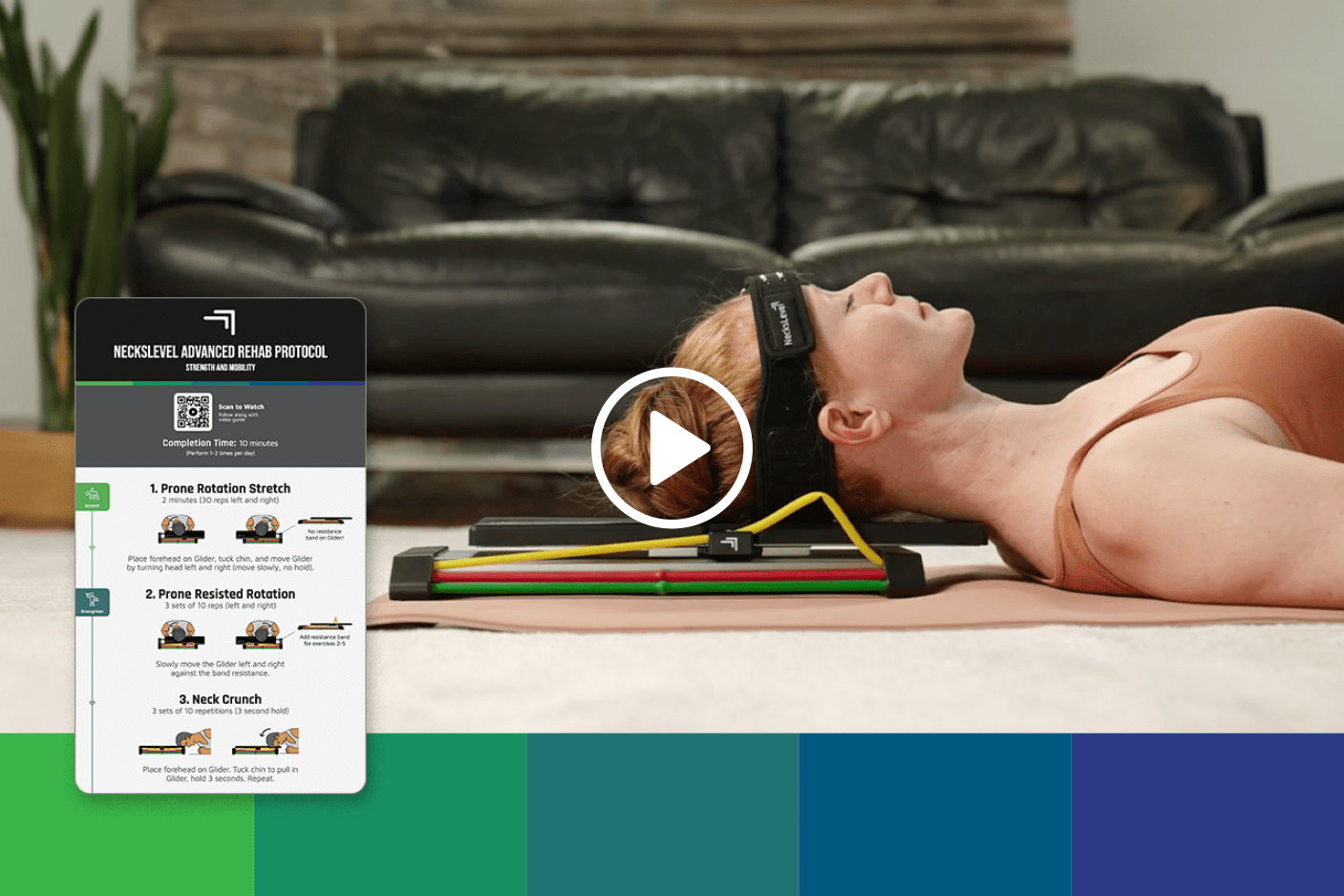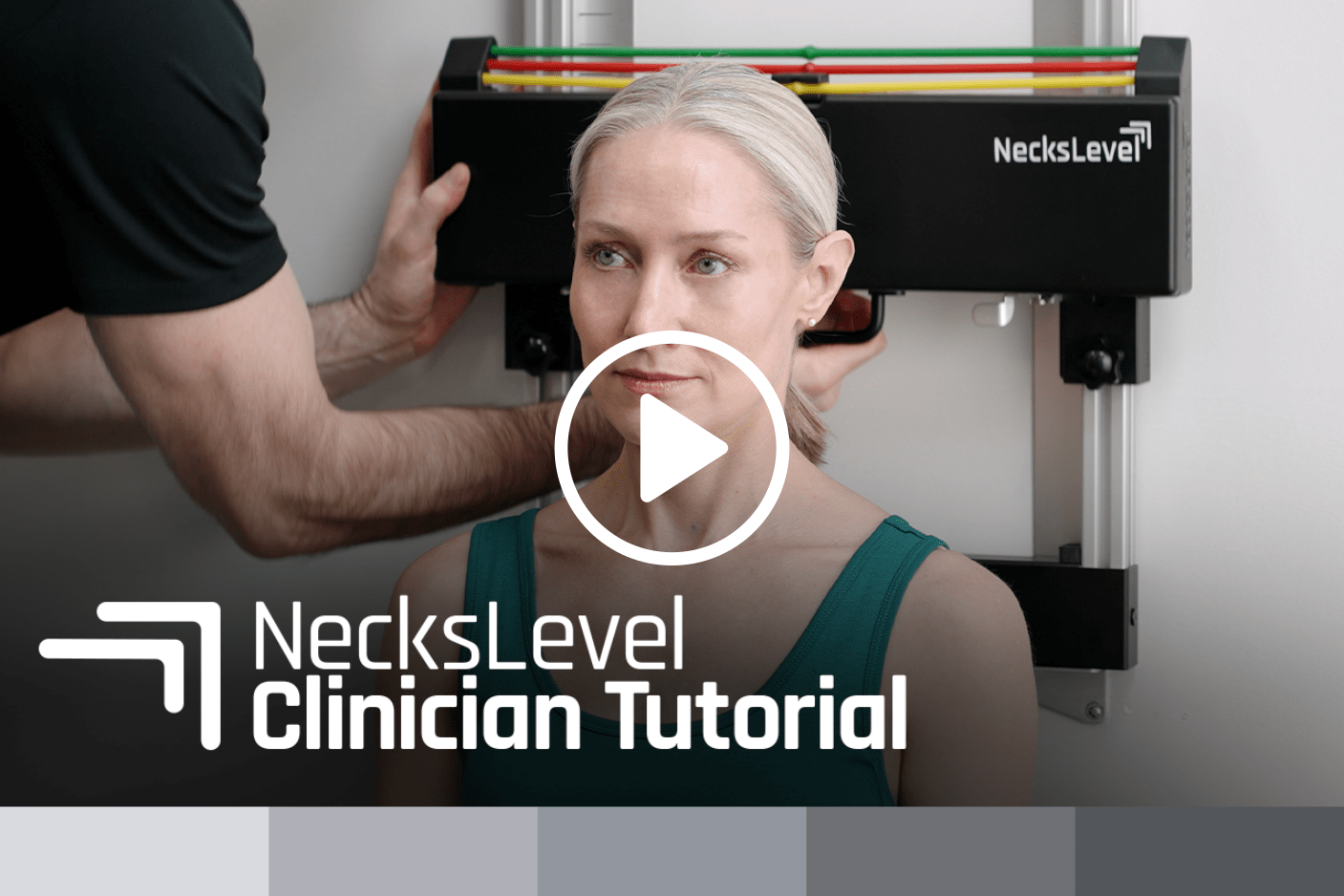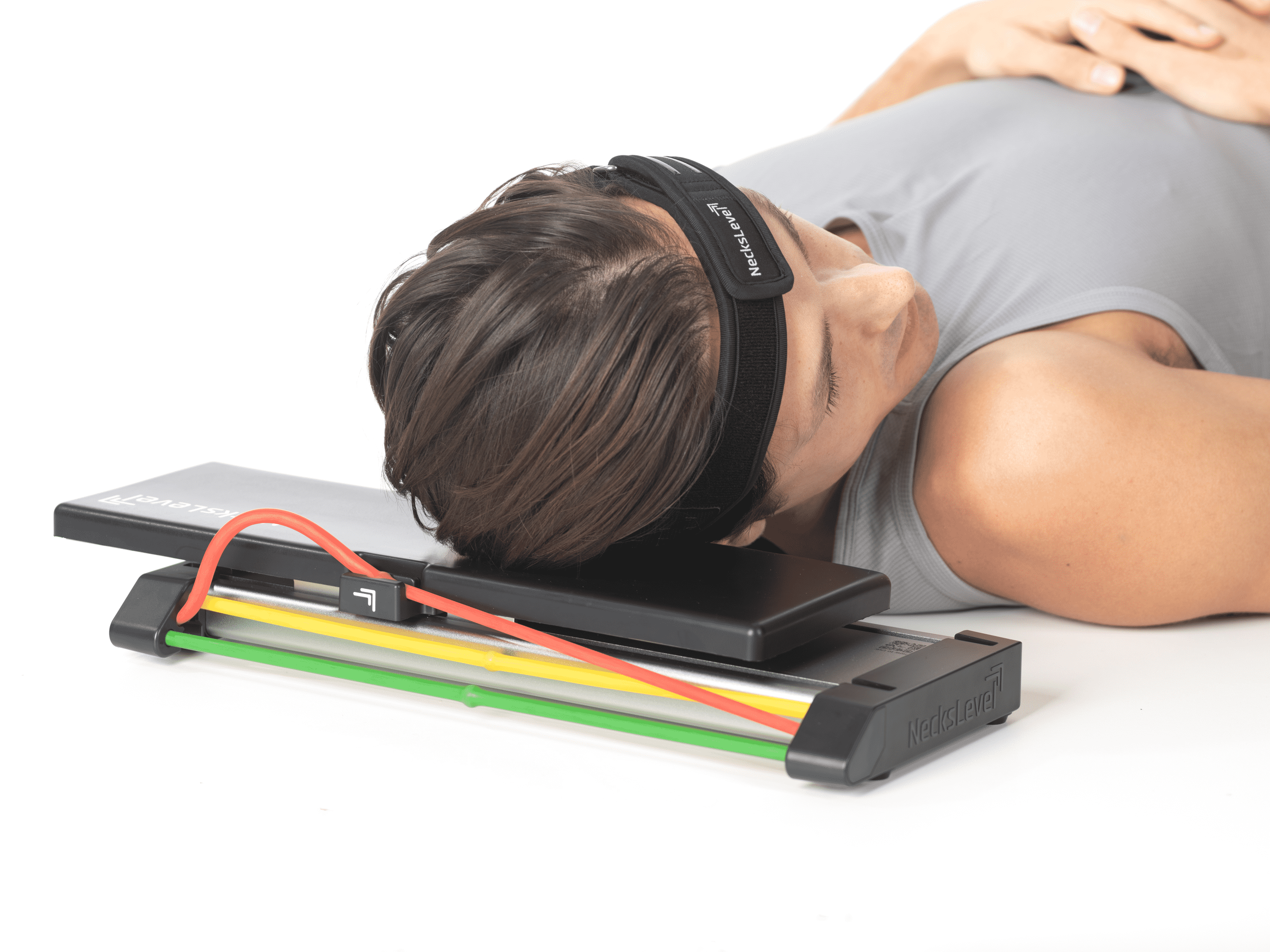Can Resistance Bands Cause Neck Pain? Resistance Bands Risks and Alternatives for Neck Strengthening

If you’ve been struggling with neck pain, you may be looking for an effective home exercise solution to strengthen your neck muscles. One option that frequently comes up is using resistance bands. But can resistance bands cause neck pain?
As a Doctor of Physical Therapy specializing in neck pain, I’ve worked with countless patients searching for the right exercises to reduce discomfort and improve mobility. While resistance bands are often recommended for strength training, they may not be the best solution for targeting neck muscles specifically. In fact, using resistance bands incorrectly could actually worsen your neck pain rather than relieve it.
Below, I’ll break down four key reasons why resistance band neck exercises can be problematic and what alternatives you should consider for safe and effective neck pain relief.
Understanding Resistance Bands for Neck Exercises
Before diving into the potential risks, let’s discuss why resistance bands are commonly used.
Resistance bands are:
Affordable
Portable
Easy to store
Versatile for different types of exercises
Because of these benefits, many people use them for neck strengthening exercises in hopes of improving posture, reducing stiffness, and alleviating pain. However, while resistance bands work well for strengthening the arms, shoulders, and legs, they may not be the best choice for the delicate and complex structures in the neck.
Now, let’s explore why resistance band exercises for neck pain might not be as effective, or even safe as you think.
1. Resistance Bands Can Be Dangerous

One of the biggest concerns with using resistance bands for neck exercises is safety. Resistance bands can easily snap, recoil, or slip off during use. If this happens, you could end up with a painful injury—or worse, damage to your face or eyes.
If you're using a resistance band for neck pain relief, the last thing you want is an additional injury. If you do attempt these exercises, always use caution and ensure you have a secure grip on the band.
2. Resistance Bands Activate More Than Just Your Neck

A common issue with resistance band neck exercises is the inability to isolate the deep neck flexors, the small muscles responsible for stabilizing and supporting the neck. Instead of working these muscles and other neck muscles directly, resistance band exercises engage a wide range of other muscles, including:
The shoulder muscles
The upper trapezius (which often holds tension)
The arms and chest
By activating so many surrounding muscles, resistance bands make it difficult to target only the neck muscles. This lack of isolation can create muscle imbalances, increasing tension in the shoulders and even worsening chronic neck and shoulder pain instead of relieving it.
3. Proper Posture is Difficult to Maintain with Resistance Bands

When it comes to neck strengthening for pain relief, posture is critical. Whether you're trying to fix forward head posture, improve cervical spine alignment, or reduce neck strain, maintaining proper positioning is key.
With resistance bands, however, it's easy to fall out of alignment because:
The band applies uneven force, making it hard to keep your head centered
You may tilt your head too far forward or backward without realizing it
There's no built-in guidance to keep your form correct
To make matters worse, if you don’t have a mirror or a professional guiding you, you may be reinforcing bad posture habits instead of correcting them. Poor posture during neck resistance training can increase stiffness, tension, and even headaches over time.
If you are going to use a resistance band for neck exercises, please make sure you use a mirror and your posture is centered in both the left/right and forward/back planes!
4. Resistance Band Exercises Are Awkward and Hard to Stick With

Let’s face it, resistance band neck exercises aren’t the most user-friendly. They often:
Pull on your hair
Slip off your head
Require awkward positioning
Make you look (and feel) uncomfortable while doing them
Because of these factors, many people find resistance band neck exercises difficult to perform consistently. And when it comes to neck pain relief exercises, consistency is everything. If an exercise feels unnatural or frustrating, you're far less likely to stick with it long enough to see results.
A Smarter Alternative to Resistance Band Neck Exercises
After working with so many patients struggling with neck pain, I became frustrated with the limitations of resistance bands. That’s why I developed a more effective solution, the NecksLevel Glide.

Why is the NecksLevel Glide Better for Neck Pain Relief?
The NecksLevel Glide is designed specifically for neck strengthening and rehabilitation. Unlike resistance bands, it allows you to:
Target deep neck muscles without engaging unnecessary shoulder or arm muscles
Lie down in a supported position knowing you have proper neck alignment
Adjust resistance levels easily without struggling with band placement
-
Perform all necessary neck movements, including:
Left and right rotation
Up and down movement
Side bending

Because the NecksLevel Glide supports your body, your shoulder blade muscles can fully relax, allowing for proper neck muscle activation without strain. This ensures that your cervical spine remains aligned, reducing the risk of posture-related pain.
Final Thoughts on Resistance Bands and Neck Pain
So, can resistance bands cause neck pain? The short answer is yes, they can, if used incorrectly or without proper form. While resistance bands are great for general strength training, they come with significant drawbacks when it comes to neck exercises. The risk of injury, difficulty in isolating the right muscles, and challenges with maintaining proper posture make them less than ideal for those suffering from chronic neck pain issues.
If you do decide to try resistance band exercises for neck pain, be mindful of:
Proper posture and alignment
The risk of bands snapping or slipping
Engaging only the right neck muscles without overusing your shoulders
The awkwardness factor, will you stay consistent with them?
For a safer, more effective alternative, consider using a tool like the NecksLevel Glide or NecksLevel Glide Pro, which eliminates these issues while providing targeted relief for neck pain. No matter what method you choose, the key is to stay informed, listen to your body, and prioritize safe, effective exercises that truly support your neck health.
Written by:

Dr. Scott Dickenson, DPT, ATC
Physical Therapist
Scott is an Orthopedic Physical Therapist specializing in neck pain with nearly a decade of clinical experience. He regularly speaks at national Physical Therapy, Athletic Training, & Chiropractic conferences on neck injuries & rehab in sport.
NecksLevel Glide
"Like having a Physical Therapist in your home"
Professional neck strengthening and stretching in one compact device. Relieve neck pain while reducing neck stiffness & improving your posture.
SHOP NOW

Related Resources:








